Hello and welcome back to another episode of Scrap Kitchen.
This is the podcast/newsletter where I talk about running a farm while starting one, while navigating climate chaos. It's pretty fun if you're interested in any of those things and if you're not, it's probably quite boring.
This episode is the ninth so far and I'm going to be calling it Solarpunk.
The reason I didn't record an episode last week was that my partner and I (along with some colleagues) went south to Ohio to see the solar eclipse. That took a large chunk of last weekend’s time. And boy, was it wonderful. 100% worth it!
In the midst of the eclipse, I saw the corona and had a big moment where I wondered what will I be doing in 22 years for the next one (or 20 years, or whenever it is). Anyway, that took priority over my time last recording time. No ragrets.
So since then, I have been doing several little Solarpunk-y things.
For those of you unfamiliar with the idea of Solarpunk, it's a play on the idea of steampunk or cyberpunk.
Steampunk is like Edwardian-esque technology, but everything has steam. Think Treasure Planet, the movie (which was a viiiibe). There's a great book that's like Egyptian Steampunk with Magic called Dead Djinn in Cairo, which I would highly recommend. But all other steampunk I find kind of...Mid. Edwardian values and gloomy outlooks abound.
Then there’s cyberpunk. Think dark alleyways, bright neon lights and, you know, a future where corporations know everything and it's always raining. Blade Runner/ Do Androids Dream is the perfect example of this.
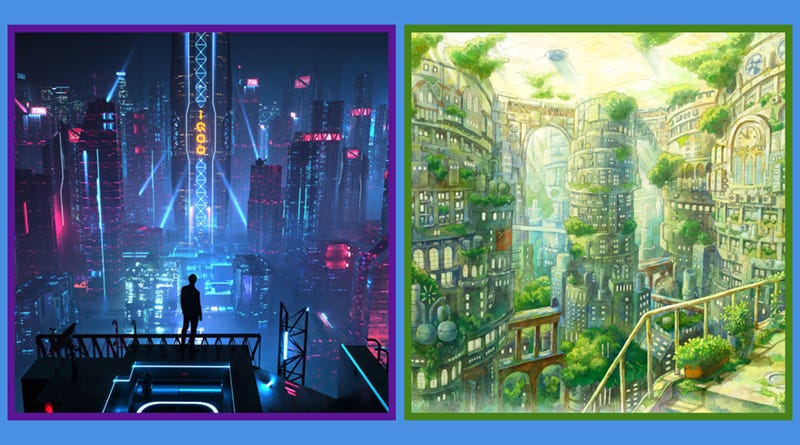
Then comes the hope. Something that I'm forcing myself to read more of, trying to give myself better futures to imagine. To envision pathways to them. Solarpunk futures.
These encompass the idea of solar-powered/renewable technology combined with nature-forward thinking. Personally agree with all of the ideas of Solarpunk, we don’t need to replace farmers with robots (we just need to pay workers better to do “low-skill” jobs). Not only that but ‘toil’ and hard work are something that a lot of people seek. They want their efforts to go into something tangible. I digress, it's basically using existing technology combined with ancient/Indigenous knowledge and respect for the planet to stop all from dying in climate catastrophe. Pretty fun stuff.
To help myself imagine these futures I have been reading a lot of Solarpunk books recently, A Half-built Garden, the Monk and Robot series, I could go on. I’ve also been reading Chris Newman’s new book about first-generation farming and the importance of working within a collective to meet the needs of your local community. He dives into the creation and maintenance of sovereign food systems, how to factor in economise of scale and create lasting change. This book is on pre-release for his patreons but when it comes out proper, believe me, I will be shouting about it.
When not reading I’ve been processing a lot of dandelions from the farm. We had a very long day last Wednesday, with the final task of the day being weeding. Without even having to ask, the team saved dandelions. Ah, the joy of being known for your love of edible weeds. That evening I came home and processed lots of dandelions in my garden. The unopened flowers were used to make capers, the leaves to dry out (to make into a nutrient-rich powder for smoothies/soups/baking) and the roots were also dried ready for roasting (into caffeine-free coffee alternative). Right now they are all drying on a mesh dehydrator in the hallway.
As I write this I’m drying Dandelion flowers for the first stage in making jam. They get boiled with lemon and orange, I let them steep for a few hours, and then the sifted liquid is boiled down with sugar and cardamom. To me, making this jam feels like the first fresh breath of spring. To be in touch with nature, capturing its bright yellow essence, deliciously holding it on your tongue.
Speaking of Solarpunk, the Land Workers Alliance, a union of farmers, is calling for a doubling of the agricultural budget to help with a transition to more sustainable and just land practices.
Their campaign for a new deal for horticulture across the UK, along with the manifesto laid bout by the Nature-Friendly Farming Network outline frameworks to support a transition to a more resilient and fair agricultural future.
At this time, in an election year, when belief in politicians is so low, it is more important than ever to connect with your local MP and share with them your concerns for our future. For a fairer and more sustainable future. It could be as simple as finding your MP, and sharing your concerns with them in an email or meeting. I can’t wait until we have the chance to invite MPs out to the farm we build to show them the importance of local, climate-forward agricultural alternatives. Until then I’ll berate them via email.
Do I think the Labour Party could and should be doing better, more, anything? Fuck yes, I do. But does that mean I’m going to disengage, absolutely not.
Current farm updates
The farm we currently manage, just outside Ann Arbor, Michigan, is in full swing. Right now we are seeding radishes everywhere. The kale and chard that overwintered (were planted in November and lived in our greenhouse until now), are starting to bolt. This means they're going to flower, along with being bitter and disgusting and not great. For their crimes, they shall be pulled out and in their place, radishes will be seeded.
We are at the stage of potting up tomatoes; which means taking them from tiny little plug trays into bigger pots. Allowing them to grow big enough that by the time we plant them out (in about a month) in mid-May they will have strong root systems and be sturdy enough to survive.
We are dabbling in chaos planting herbs at the moment, which is heavy direct seeding, sprinkling herbs in the ground in certain beds. They don't seem to do that well transplanted at the moment, or they don't germinate as expected so we’re being a bit more liberal. Improving on a practice we used last year.
Right now we are having a Vole Apocalypse! On top of the kale and chard bolting and trying to go to seed they're also being undermined (quite literally, their roots are being eaten through) by voles. Our mousetraps have been very effective this year and completely ineffective vole-wise. Apparently, because mice will climb up things for peanut butter and voles don't like beef jerky as much as the internet thinks they do. At this rate, we’re losing like a kale plant every couple of days to just vole activity. In the greenhouse in the mornings, you can see them skittering around, flagrantly rubbing it in our faces. So that's certainly something we're working on.
Because of torrential rain, we took the opportunity to take the day off work on Friday. Not only had we run out of inside tasks but most of the outside tasks are awful to perform in wet soil and can even increase compaction if you do them wrong.It was wonderful to have a little more time to do things, which brings me on to…
Future farm updates
We, my partner and I, spent yesterday working more on our business plan. We've come up with a pretty good tool for calculating the Cost to Produce for various vegetables we intend to grow. This includes the hours it takes to seed, to water, to plant, to prep beds, to harvest, to wash. Added into that the price of seeds, potting mix and crop-specific equipment. We decided not to include the price of trays or compost because we're going to have to buy those straight up at the start of every year (a sunk cost, if you will). From that, we calculate roughly a 30% loss (at least) to figure out how many bunches we could produce of kale (or whatever else). From there, the predicted profit per bunch can be calculated. It’s definitely interesting to look at, and consider what you want to factor in. Do I include the cost of going to market in the per-bunch pricing? Or is it also a sunk cost for the eight hours spent (prepping for, travelling to and working at the farmers market).
All sorts of other costs come up. Naturally, we've been having debates around that.
Which have read to clear decisions, such as the starting size we want to grow on, roughly four blocks of ten 50’(15m). Plus a High tunnel (eight 15m beds) for our Solinacea.
We're trying to figure out how best to contact local businesses, such as value-added producers (jams, ferments etc.). Until we know where we're going to be next year, this is not the easiest task. But we still have an outline, informed by Chris Newman’s suggestion to do a community food assessment before getting into business, of how plan to do so.
Quite a bit of work yesterday.
We were also sent a beautiful link for some land from my mother. We won't be buying that land sight unseen, but if anyone is interested it’s on auction in May. It's pretty cool to see that there are plots of land out there for when we might actually get the chance to buy some. How very hope-making.
For now, I think we've settled on leasing land for two to three years. First to get our foot in the door in the UK market, and also to not financially over-commit. Once there, we’ll make more informed decisions down the line.
So thats it, lots of planning, lots of prepping on our current farm and for our future farm.
But through it all, pretty good.
Pretty Solarpunk to imagine how we integrate ourselves into a food system, to make it fairer, more sustainable, more sovereign. It’s a pleasure and privilege to be able to think about this.
See you next week,
Ok, Bye.
M
Find me on Instagram, The Dots and my Website.
To support my work, please consider buying me a Coffee.
If you missed the last update, read it here.




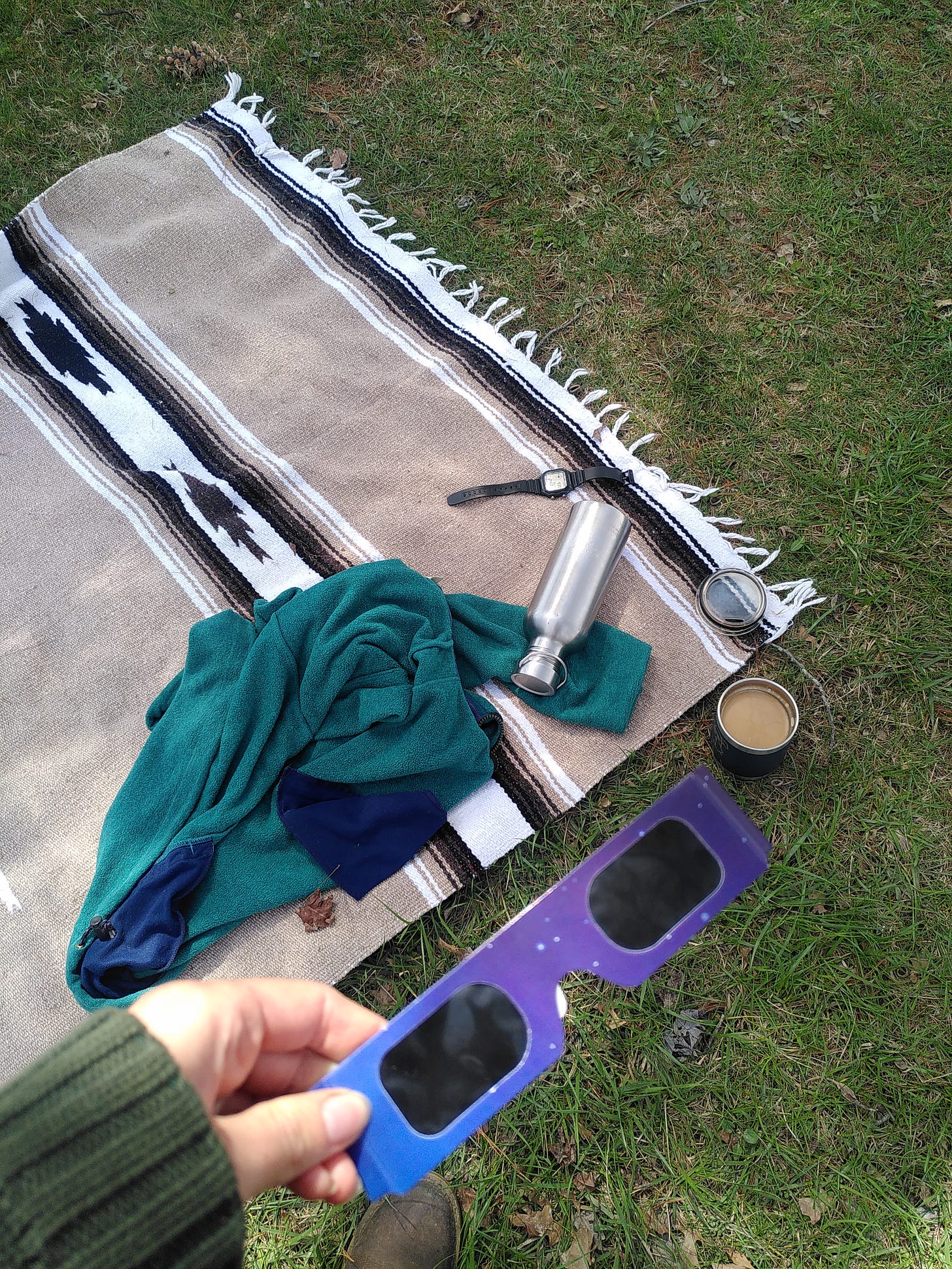
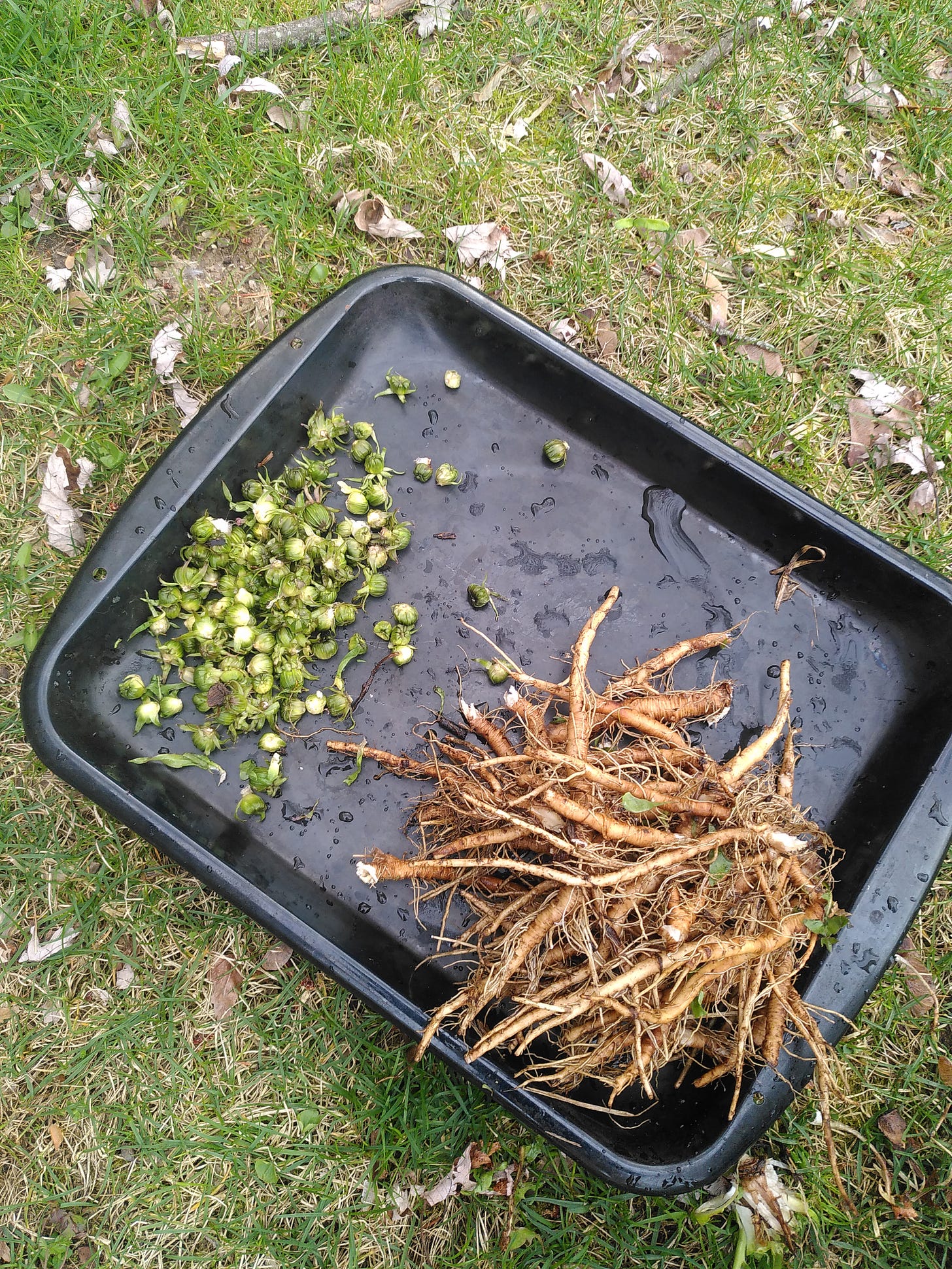

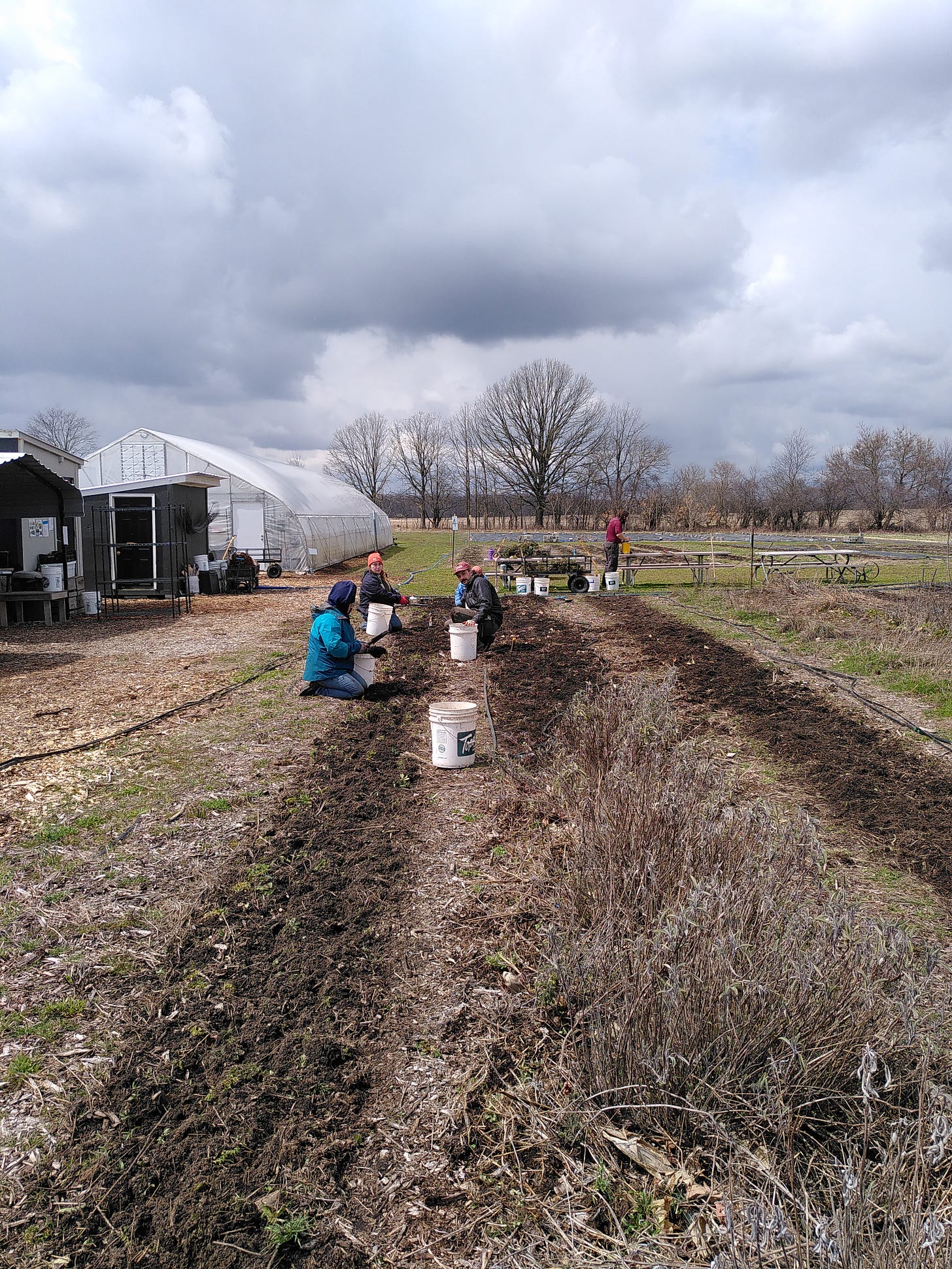



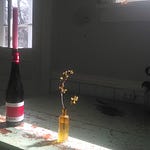






Share this post